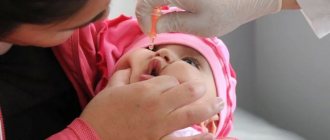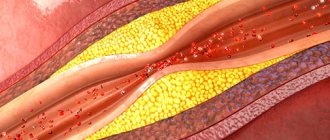Service price
- HOSPITAL Day hospital5 000
- Day hospital with intensive care8,000
- 24-hour hospital (all inclusive, cost per day) 12,000
- 24-hour hospital (all inclusive, cost per day). Single occupancy24,000
- 24-hour hospital (all inclusive, cost per day). Single occupancy in a superior room 36,000
- Primary family counseling for relatives of patients undergoing inpatient treatment free of charge
- Group psychotherapy for relatives of patients undergoing inpatient treatment free of charge
- Group psychotherapy for 24-hour and day hospital patients free of charge
- Individual post for a hospital patient (if indicated)6,000
Organic personality disorder —changes in personality and behavior due to damage to brain tissue.
Any damaging effect on the nervous system causes changes in the mental state. But for a personality disorder to develop, the harmful effects must be long-lasting or leave behind irreversible changes in the form of neuronal death. atrophy of brain tissue, growth of neoplasms (cysts and brain tumors), impaired blood supply to the brain.
Information portal – Resource Center “Borderline Personality Disorder”
Author: clinical psychologist, Ekaterina Tarasova.
Borderline personality disorder (BPD) brings enormous problems both for the sufferer and for the family and society as a whole. People with BPD usually suffer from this “disease” at a young, working age. Mental disorder takes away strength, resources, and the ability to be productive in professional activities.
The problematic nature of BPD is characterized by recurrent crises, hospitalizations, suicide, suicide attempts, addictions, and episodes of depression, anxiety, and aggression. The prevalence of BPD in the general population is estimated to range from 0.5 to 2.0% (Samuels, Eaton, Bienvenu, 2002). The risk of suicide is estimated to be up to 10% (Paris, 1993)[8].
Patients with BPD face many difficulties in their education and in their professional lives. In a cost of illness study that examined the economic burden of BPD on society, productivity costs calculated using HCEXT accounted for almost 42% of total costs (Van Asselt, Dirksen, Arntz, Severens, 2007), most of which were related to disability [8].
Psychiatric hospitalization is five times more likely for people with borderline personality disorder than for people with major depression (Bender, Dolan, Skodol, 2001), and many patients using inpatient mental health care are diagnosed with borderline personality disorder (Swigar, Astrachan, Levine ,1991) [7].
People with BPD may be considered disabled in the workplace if participation in risky behaviors or intense anger interfered with the person's ability to function in their occupation [4].
People with BPD have limitations in their work activities. As a girl with BPD says: “I have a disability due to borderline personality disorder. I will never be able to work as a teacher, air traffic controller, or where there will be access to weapons. But in those jobs where a certificate from a psychiatrist is not required, no one will know anything. One of the advantages is that disability gives you the right to free travel on transport and study at the university. If you wish, you can get a small allowance and preferential rental housing” (in Greece) [2].
The problem of disability and borderline pathology is quite serious.
It should be noted that a number of foreign studies of disability in BPD have been conducted. In a study of 45 medical outpatients, Sansone, Hruschka, Vasudevan, and Miller (2003) noted that 72% of participants with a history of disability payments, compared with 26% of disabled participants, met “borderline criteria” [9].
People with disabilities who suffer from BPD need rehabilitation. They need socialization, professional development and stability.
Dialectical behavior therapy (DBT) can help people with borderline personality disorder overcome challenging behavior and improve functioning, as well as increase their retention in treatment and reduce hospitalization. This method of psychotherapy with evidence-based effectiveness [6] helps improve the quality of life of patients with BPD and minimizes the risk of disability. Another link in rehabilitation is psychoeducation. Understanding the characteristics of behavior and the causes of a mental disorder allows you to seek help in time.
Currently, there are charitable organizations involved in the employment of disabled people and the social rehabilitation of people with mental disorders.
You can view information about charities working with people with disabilities here:
- https://www.skbs.ru/index.php/11-poleznye-ssylki/370-blagotvoritelnye-fondy-pomoshchi-invalidam-2017
- https://aupam.ru/pages/trudoustroistvo/perspektiva_somsti/page_07.htm
- https://dusha-fond.ru
In general, the problem of disability in BPD is still very little addressed in our country. But one thing is already obvious: “borderline patients” are in dire need of comprehensive measures for psychological rehabilitation and readaptation to improve the quality of life and professional functioning. Professional life activities promote self-realization, a sense of one’s significance and usefulness to society, which is necessary for the recovery of people with mental disorders.
Literature
- Medical and social examination and rehabilitation: collection. scientific article / State Republican Scientific and Practical Center for Medical Rehabilitation and Expertise; under general ed. V. B. Smychka. – Minsk: UE “Encyclopedics”, 2021. – 356 p.
- From Hate to Hate: How I Live with Borderline Personality Disorder. URL: https://www.wonderzine.com/wonderzine/life/experience/233211-bpd
- Shubina S.N. , Skugarevsky O.A. Anorexia nervosa and disability. URL: https://rep.bsmu.by/bitstream/handle/BSMU/24392/21.pdf?sequence=1&isAllowed=y
- Borderline Personality Disorder. URL: https://en.wikipedia.org/wiki/Borderline_personality_disorder
- Borderline Personality Disorder: Treatment and Management. URL: https://www.ncbi.nlm.nih.gov/pubmed/21796831
- Carter G, Willcox C, Lewin T, Hunter DBT project: randomized controlled trial of dialectical behavior therapy in women with borderline personality disorder. URL: https://www.tandfonline.com/doi/abs/10.3109/00048670903393621
- Comtois K., Kerbrat A., Atkins D., Harned M., Elwood L. Recovery From Disability for Individuals With Borderline Personality Disorder: A Feasibility Trial of DBT-ACES/ URL: https://ps.psychiatryonline.org/doi /full/10.1176/ps.2010.61.11.1106
- Van Asselt A., Dirksen S., Arntz A., Severens J. Difficulties in Calculating Productivity Costs: Work Disability Associated with Borderline Personality Disorder/ URL: https://onlinelibrary.wiley.com/doi/full/10.1111/j. 1524-4733.2007.00288.x
- Zanarini M, Jacoby R, Fitzmaurice G. The 10-Year Course of Social Security Disability Income Reported by Patients with Borderline Personality Disorder and Axis II Comparison Subjects. URL: https://www.ncbi.nlm.nih.gov/pmc/articles/PMC3222934/
Causes
Organic personality and behavior disorder develops after mechanical damage to the brain due to:
- Traumatic brain injuries.
- Chronic alcohol and drug poisoning.
- Prolonged oxygen starvation.
- Disturbances of blood flow to the brain. Strokes and cerebral infarctions.
- Epilepsy.
- Nervous system infections.
- Cerebral palsy.
- ADHD.
- Atrophy or neoplasm of brain tissue.
- Encephalopathies of any origin.
Is it possible to get a license if you have a personality disorder?
Personality disorder is a disease in the category of mental and behavioral disorders. Such a disease can only be an obstacle to obtaining a driver’s license if it is accompanied by severe, persistent or often worsening painful manifestations. Simply put, whether such a person will be given a license depends on the severity of the disease, which can only be determined by a psychiatrist, whose conclusion must be obtained by everyone without exception who wants to pass a license.
Symptoms
These signs should be observed for a long time (at least six months):
- Unstable mood , rapid change of emotions (from tears to laughter in an instant), attacks of melancholy-angry mood (dysphoria), a tendency to an increased stupid and blissful mood (euphoria) without external reasons for this.
- Loss or decrease in the ability to foresee the consequences of one's actions. Incontinence of drives and needs.
- Difficulty learning.
- Decreased memory and attention.
- Thinking in detail (getting stuck on little things).
Symptoms of BPD
The first signs of the disorder usually appear in adolescence; over the years, disease statistics decrease and in almost 50% of patients the condition improves within ten years after the first symptoms appear. There are almost three times more cases of disease among women than among men.
The cornerstone of the disease is an unstable emotional state, the impetus for which was an excessive reaction to external events and inhibition of return to the previous emotional state. Susceptibility to such impulsive transitions is observed among those who are prone to sudden changes in evaluating people, from idealization to disappointment. Patients with this disorder have extremely intense sensitivity, they can be overwhelmed with love, joy, they can experience unprecedented elation, but at the same time they are also overwhelmed by negative emotions: anger and anxiety, fear and guilt. The intensity of emotions is so great that a substitution of reactions occurs: patients grieve greatly instead of the usual sadness, feel shame and humiliation instead of awkwardness, panic instead of a little excitement, reach the point of insanity instead of indignation.
With borderline disorder, the threshold of sensitivity to unsuccessful developments of events and to receiving refusal is high. Trying to avoid strong negative emotions, people suffering from BPD harm themselves and hide their feelings. The inability to control one's reactions sometimes leads to suicide. Despite short-term feelings of elation and light fun, the patient most intensely manifests anger and dejection, rage and loss, alternating anxious and depressive moods.
Impulsive behavior
(abuse of alcohol and/or psychotropic substances, excessive consumption of food or eating disorders, uncontrolled spending of money, promiscuous sexual relations, dangerous driving, sudden dismissal, sudden end of a relationship) reflects impulsive emotions - this is how a person strives to get rid of the strongest mental pain and the problems that cause it. But after some time, pain comes from repentance, a feeling of guilt for one’s action and, as a response, a desire for a new impulsive act in order to alleviate the new pain. Over time, this behavior in some cases becomes an automatic reaction to the pain of a negative emotion.
Injury
is one of the main symptoms of borderline disorder and is present in 80% of cases. The most common type of cut is made to the body. Also included are bites, varying degrees of burns, bruising, and head-banging. It is worth noting that up to 70% of patients cause physical harm to themselves without the intention of committing suicide. Self-harm here acts more as a way to punish oneself or to distract from the pain caused by a negative emotion. This is an attempt to evoke ordinary feelings in a situation of withdrawal from social fulfillment and can be an expression of anger or anger at difficult life circumstances.
The risk of suicide in BPD is up to 10%.
There is proven evidence that men are at greater risk (twice as high) of committing suicide than women. Suicidal tendencies and suicide attempts in patients with borderline disorder may indicate their belief that by doing so they will make life easier for others, that everyone will feel better. Such patients are especially sensitive to how people treat them: they are overly happy and grateful for good treatment and, conversely, are overly sad or angry when they are offended or criticized. The range of feelings is vast and their change occurs very quickly. Sometimes the mere possibility that the right person may disappear from life or that one may lose his respect is enough, and the pendulum of feelings swings from love to hate, from reverence to disappointment. Such sentiments harm not only specific relationships, they affect relationships in the family, in society, and on self-esteem.
With borderline disorder, there is a tendency to perceive the world as a dangerous place full of malicious people. At the same time, there is boundless devotion in romantic relationships, based on fear. This is facilitated by dissatisfaction with the partner, conflicts in the family and physical violence, chronic stress, and unwanted pregnancies. To protect itself from intense emotions caused by painful life events, the mind shifts its attention away from those events or memories of them. Blocking negative emotions temporarily alleviates impulsive feelings, but at the same time dulls ordinary emotions, causing a person with borderline disorder to lose the ability to concentrate and react naturally in everyday life, which significantly complicates his position in society.
Treatment
Three directions of treatment:
- Therapy of the underlying disease - organic damage to the nervous system.
- Restoration of not yet dead, preserved nerve cells.
- Psychotherapeutic work aimed at developing a critical attitude towards one’s condition, learning to control emotions and cognitive training.
- Psychological work with the patient’s loved ones.
Medication, physiotherapeutic, psychotherapeutic methods, biofeedback therapy, diet therapy, reflexology, exercise therapy and other methods are used.
PsyAndNeuro.ru
Psychiatric nosology includes a number of conceptual dichotomies and polarities; some of them have to do with underlying philosophical assumptions, others with the choice of methodology, the needs that the classifications are designed to satisfy, and the differences between classifications.
Below are several examples of conceptual polarities related to psychiatric nosology.
Descriptive classifications take into account phenomena that exist at the level of clinical observation and description (details of the clinical picture, anamnesis, signs, symptoms, etc.). Etiological classifications take into account the causal mechanisms (identified or hypothesized) underlying clinical manifestations. Medicine generally favors etiological classifications, but in psychiatry the limiting factor has always been that the etiological mechanisms of mental illness are poorly understood or too complex. Because there is a subset of psychiatric conditions with identified biological causes, most psychiatric classifications use a combination of descriptive and etiological strategies.
When defining a disorder, classifications may place different emphasis on the symptoms and course of the disease. Symptom-based systems use a collection of simultaneous clinical events to determine a diagnosis. Disease course-based systems distinguish mental states by how they develop over time.
The categorical approach involves dividing mental states into separate categories. Categorical classification means that when sorting entities, it is determined whether a given entity belongs to a given class or not. The dimensional approach classifies various features of psychopathology along several continuous dimensions (or continua). The dimensional approach may be quantitative, but it also takes into account qualitative gradations along a spectrum (eg, mild-moderate-severe).
Operational criteria are criteria by which observers can decide whether a particular diagnostic term is applicable in a given case. The DSM (since its third version) is based on operational criteria, unlike most classifications in the history of psychiatry. Clinical descriptions offer “textbook” descriptions of clinical presentations that clinicians often rely on in practice as prototypes (i.e., assessing how well a patient's clinical picture matches the “prototypes” described in the classification). The tradition of clinical phenomenology emphasizes the importance of collecting data about the patient's subjective experiences.
Nomothetic and idiographic are terms coined by the philosopher Wilhelm Windelband to describe two different approaches to cognition. The nomothetic method describes phenomena in terms of general laws and scientific categories, while the idiographic method aims to understand unique and specific phenomena. In psychology and psychiatry, the idiographic approach emphasizes the subjectivity and psychological history of the individual. The polarity “Idiographics vs Nomothetics” is synonymous with the polarity “People vs Diseases”. The idiographic method focuses on the individual (eg PDM Diagnostic Manual - Psychodynamic Diagnostic Manual) rather than on diseases as in the DSM.
In monothetic classifications, all objects in a class have the same set of attributes. In polythetic classifications, members of a class have many attributes or characteristics in common, but none of them are shared by all members of the class. The DSM diagnostic criteria use a polythetic approach.
The idea that there is only one form of mental disorder with an underlying invariant substrate (neurobiological or psychological), which manifests itself differently in different people depending on individual characteristics and environmental factors, is most clearly illustrated by the concept of “unitary psychosis.” This position can sometimes be considered “dimensional” if the underlying process of the disease manifests itself in qualitative gradations. The opposite approach is based on the idea that there are several different mental illnesses.
These terms refer to the way classifications are constructed. Descending psychiatric classifications proceed from clinically observed phenomena to biological/psychological substrates, while ascending classifications proceed from direct examination of biological/psychological substrates to clinical phenomena.
A diagnosis is a label with a description that best explains the symptoms and signs of a disease. The problem statement conceptualizes the patient's condition by integrating examination data on a specific theoretical basis. Diagnosis and problem formulation are not mutually exclusive concepts; different diagnostic systems may emphasize them differently. The DSM criteria, for example, are largely independent of the problem statement, whereas the PDM framework assumes the use of a problem statement.
Organic disorders are conditions in which mental symptoms may be causally related to a brain disease, traumatic brain injury, or stroke that causes brain dysfunction. In functional disorders, psychiatric symptoms cannot be attributed to independently diagnosable systemic or brain diseases. The distinction between organic and functional disorders has been a core tenet of psychiatric classification for much of the modern history of psychiatry, but the distinction has become the subject of considerable controversy (especially the notion that functional disorders have no biological causes) and has been formally dropped from DSM-4 and then from ICD-11.
Statistical, administrative and epidemiological needs influence how disease data are collected. In its simplified form, a statistical classification may simply be a list of agreed upon terms (“diagnostic codes”) that are used to estimate morbidity and mortality. Classifications that are developed for clinical practice are based on clinical observations and are intended for differential diagnosis, treatment guidance, communication with other specialists and clinical research.
Medical classifications are primarily used by health care professionals in medical settings, while nonmedical classifications are intended primarily for use in nonmedical settings (such as a therapist's office). Given that psychiatry is a medical discipline, psychiatric classifications are primarily medical. However, it is increasingly recognized that psychiatric classifications do not always meet the needs of non-clinicians working in the field of psychology. PDM is an example of a non-medical classification.
| Kraepelin | Wernicke | Freud and Meyer | DSM III, IV, V | PDM | RDoC | |
| Description vs etiology | Descriptive | Etiological | Etiological | Descriptive | Descriptive and etiological | Etiological |
| Symptoms vs course of the disease | Greater emphasis on disease progression | – | – | Greater emphasis on symptoms | – | – |
| Categories vs dimensions | Categories | Categories | – | Categories + dimensions | Categories + dimensions | Dimensions |
| Operational criteria vs Phenomenology | Phenomenology | – | Phenomenology | Operational criteria | Phenomenology | – |
| Idiographics vs Nomothetics | Nomothetics | Nomothetics | Idiographics | Nomothetics | Idiographics | Nomothetics |
In 1682, Thomas Sydenham argued that “the nature that produces disease is uniform and consistent,” and diseases can be described with precision and certainty, like species of plants. Sydenham understood disease as a collection of observable symptoms with a predictable course. Following Francis Bacon, he emphasized the importance of empirical observation. Sydenham believed that “proximal” causes can be observed, but “primary causes” are speculative and unobservable. In his classification of mental illnesses, Sydenham, based on characteristic symptoms, identified three types: “hysteria”, “mania” and “melancholia”. He divided them into subtypes based on combinations of symptoms, contextual factors, similarities, and assumptions about etiology based on humoral theory.
The 18th century witnessed impressive developments in classification in the natural sciences, culminating in the taxonomy of Carl Linnaeus. Linnaeus created a symptom-based classification of diseases and included various mental conditions. Mental disorders were divided into disorders of judgment, imagination and desire.
William Cullen published the first widely used system of medical nosology in 1769. He disagreed with classification based on symptoms and argued for the importance of cause and effect in the formation of disease groups. Accordingly, in his system, mental disorders were combined with neurological disorders into the group of “neuroses.” Neuroses were one of the four main categories of disease, although Cullen later proposed that the nervous system or nervous energy underlay all medical conditions. Thus, a contradiction arose that continues to this day between classification systems based on symptoms (descriptive) and those based on causation (etiological).
In 1801, the French physician Philippe Pinel proposed a division of mental illness into four types: melancholy, mania, dementia and idiocy. He viewed them not as separate entities, but rather as forms of manifestation of a single mental illness. His classification of diseases corresponded to his patients - people admitted to psychiatric hospitals - so it does not include such conditions as “hysteria” and “hypochondria”.
This conceptual dichotomy, reflecting the difference between asylums and clinics, persisted in the late 19th and early 20th centuries, when neuroscientists such as Jean-Martin Charcot and Sigmund Freud studied “neuroses.” Remnants of this dichotomy still persist even after psychoses and neuroses were reintegrated in the twentieth century.
In the 19th century Another dichotomy emerged, which became an early precursor to the division between organic and functional psychoses. In 1820, Etienne-Jean Georget distinguished “acute delirium,” caused by intoxication or detected lesions of the brain or other organs, from “madness,” caused by changes in the brain in cases where autopsy shows no visible damage. This division was established in order to confirm the legitimacy of psychiatry and justify Pinel's “moral treatments”.
In Europe in the 19th century. Many psychiatric nosologies appeared; the creation of the author’s classification of mental illnesses was considered as a sign of professional growth and success of a psychiatrist. In the middle of the 19th century. French classifications were based on etiology (including the presumed relationship of the disease to brain anatomy), phenomenology, disease course, and response to treatment.
In addition to categorical classifications, in the 19th century. the beginnings of a dimensional approach appear. Dimensionality is combined with the idea of the unity of mental disorders. For example, Benedict Augustin Morel in 1860 conceptualized mental disorders as various manifestations of “degeneration,” ranging from “nervous temperament” to “idiocy.” From this grew the idea of “unitary psychosis,” adopted by Wilhelm Griesinger and which had a huge influence on European psychiatry in the pre-Kraepelin period.
A turning point in the history of psychiatric nosology was the emergence of Emil Kraepelin's system, based on the work of his predecessors Karl Ludwig Kahlbaum and Ewald Hecker. Kahlbaum and Hecker recognized that psychiatric diagnostic terms such as “melancholia,” “mania,” and “dementia,” which denote exactly the same heterogeneous symptom complexes as “abdominal pain” or “headache,” are diagnostically nonspecific. They believed that reliance on such diagnoses only contributed to diagnostic confusion and resulted in neuroanatomical and neuropathological research (which dominated 19th-century European psychiatry) failing to shed light on the etiology of mental illness.
They believed that etiological studies would yield results only when clinical phenomena were studied, which included not only symptoms, but the entire course of the disease. Progressive paralysis was a model for the development of such a paradigm because, although its cause had not yet been discovered at the time, the characteristic symptoms and course of the disease were well established.
Based on long-term observations of patients, Kahlbaum and Hecker proposed the categories of hebephrenia, catatonia, and cyclothymia . Kahlbaum noted that hebephrenia usually led to the rapid development of mental impairment or dementia (“dementia”), while catatonia (which was defined as a motor syndrome with psychosis) and cyclothymia usually did not, despite multiple relapses.
Emil Kraepelin (1856-1926) was also dissatisfied with the failure of neuroanatomy and neuropathology in psychiatry. He believed that this failure emphasized the need for a more informative nosology based on clinical features and adopted the conceptual framework of Kahlbaum and Hecker. Kraepelin placed the “disease concept” (Krankheitsbegriff) as the theoretical basis for his classification and identified diseases through clinical observation, on the basis that there were several diseases rather than a single disorder in several forms.
Kraepelin was an astute and experienced psychiatrist who kept detailed case histories of thousands of patients. At the heart of his classification system is the division between dementia praecox and manic-depressive illness, with the former disorder, unlike the latter, worsening over time.
Kraepelin grouped hebephrenia, catatonia, and dementia paranoides into the category of dementia praecox, based on what he found to be a common feature of mental deterioration, which distinguished dementia praecox from manic-depressive illness.
Kraepelin had a somewhat ambiguous idea of the chronic delusional-hallucinatory syndrome, and in the 8th edition of his textbook he created a separate category of paraphrenia for chronic psychoses in which the intellect or personality is not damaged.
It would be incorrect to say that the only differentiating criterion was the course of the disease; Kraepelin also emphasized differences in general clinical manifestations. Kraepelin believed that the same symptoms could appear in some cases in both dementia praecox and manic-depressive illness, in which case the course of the disease could distinguish one disease from the other. He believed that the most important, but not the only validators of psychiatric diagnoses are the clinical course and outcome of the disease.
Many of Kraepelin's followers retained his diagnostic categories, but conceptualized them as syndromes with different progressions over time. For example, Eugen Bleuler (1857-1939) in 1911 turned dementia praecox into a “group of schizophrenias”. Bleuler emphasized what Kraepelin described as a “disturbance of internal psychic association” rather than on the course of the disease and the deterioration of the state of mind.
Kurt Schneider (1887-1967) divided the field of interest of psychiatry into “diseases” and “abnormal variations”. The first category includes organic psychoses and endogenous psychoses (schizophrenia and manic-depressive psychosis, conditions whose biological causes were unknown, but their existence was assumed), the latter includes personality disorders and reactions to experiences. The prototype of Schneider's system was present in Kraepelin's nosology, which allowed for the possibility of a “psychogenic” etiology of some disorders and recognized that there could be smooth transitions between disorders and personality traits.
Kraepelin's contemporary, Karl Wernicke (1848-1905) developed a psychiatric classification based on cerebral localization. He hypothesized that mental disorders arise from “sejunctions” or failures in communication between neuronal systems, which lead to hyperfunction, hypofunction, or parafunction of three systems: psychomotor, psychosensory, and “intrapsychic” (the center between the psychomotor and psychosensory pathways) . For example, it was assumed that hallucinations are caused by psychosensory hyperfunction, anxiety by psychosensory parafunction, melancholy by intrapsychic hypofunction, mania by intrapsychic hyperfunction, and catatonia by psychomotor hypofunction.
Wernicke's ideas were further developed by Karl Kleist (1879-1960), and then Karl Leonhard (1904-1988). Kleist introduced the concept of “bipolarity” in relation to episodic psychoses. Leonhard formalized the distinction between unipolar and bipolar mood disorders, citing early family studies to support this classification. From Leonhard's perspective, bipolarity was characterized by fluid symptoms and extremes, whereas unipolarity was characterized by relatively stable symptoms. Leonhard did not limit bipolarity to mood disorders, but also applied it to Bleuler's schizophrenias and divided them into “systematic” (with a steady deterioration) and “non-systematic schizophrenia” (with intermittent periodicity).
Kleist and Leonhard also suggested the existence of a third group of “cycloid psychoses” - acute psychoses with a rapid onset, with confusion, as well as polymorphic and variable symptoms. Kraepelin would classify “cycloid psychoses” as a manic-depressive illness due to the lack of long-term deterioration; however, acute psychoses without mood disorder symptoms were considered “atypical” by many psychiatrists, and this “atypical” group was included in the category of “cycloid psychoses” by Kleist and Leonhard.
Wernicke's theory was rejected by Karl Jaspers as a “mythology of the brain,” and Kleist himself was rejected by psychiatry as a “cerebral localizer.” While the conceptual foundations of this tradition have long been discarded in their original form, Leonhard's unipolar-bipolar division of mood disorders has been incorporated into modern diagnostic manuals. Moreover, modern “biological psychiatry,” with its emphasis on neurobiology and neural networks, recognizes the Wernicke-Kleist-Leonhard tradition as its intellectual ancestor.
The idea that categorical classification was not applicable to psychiatry was put forward almost immediately. This was one of the criticisms leveled against Kraepelin's nosology. In 1894, Wilhelm Dilthey introduced the distinction between “erklaren” (scientific explanation in terms of general laws) and “verstehen” (understanding in the context of individual biography), suggesting that psychiatry should be idiographic rather than nomothetic. The anti-categorical view gained popularity in the twentieth century. along with the spread of Meyer's ideas and psychoanalysis.
Adolf Meyer's (1866-1950) concept of “psychobiology” and Freudian psychoanalysis conceptualized mental disorders as reactions of the individual to various life circumstances or as products of unconscious psychic forces. Kraepelin's approach to diagnosis did not fit well with this understanding of psychopathology, and this led to complete disregard for psychiatric classification in the psychoanalytic community.
Since the middle of the 19th century. The field of medical statistics is experiencing rapid growth, driven by the need to accurately report hospitalizations and causes of death. The most common modern psychiatric nosologies, DSM and ICD, arose precisely on this basis. Unlike earlier taxonomies, these systems were developed by large organizations (requiring consensus from multiple stakeholders) to solve pragmatic problems. Other modern taxonomies such as PDM and RDoC were created to fill the gaps of the DSM and ICD.
The need for a uniform international classification was stated at the first International Statistical Congress in 1853, and the first internationally recognized system was adopted by the International Statistical Institute in 1893. Known as the Bertillon Classification, this system was revised several times in 1900, 1910 and 1920. The list of diagnoses was primarily intended to describe causes of death, and psychiatric diseases were placed under the section “Diseases of the nervous system.”
In 1946, the newly created World Health Organization began to work on international medical classification and two years later published the sixth edition of the system, which became known as the ICD. The advent of ICD-6 marked the beginning of a new era of medical statistics, introducing a combined classification of morbidity and mortality to facilitate international cooperation and bring uniformity to government reporting. This was the first system to include a special section for mental disorders. The main subsections were psychoses, psychoneurotic disorders and disorders of character, behavior and intelligence.
The mental disorder chapters of ICD-6 and ICD-7 were little more than a list of approved names of psychiatric disorders with code numbers. At the request of the British Government, a glossary of terms has been prepared for use in the UK in conjunction with ICD-8. Aubrey Lewis (1900-1975), who led the preparation of the glossary, advocated a predominantly descriptive approach to psychiatric classification, and his views had a huge influence on the ICD-8 classification of mental disorders, which was introduced in 1969. British Glossary, published in 1967, served as the model for the ICD-8 glossary. ICD-8 brought all mental disorders into one section (many organic mental disorders were previously placed in different sections), expanded several diagnostic categories, such as personality disorders and addictions
In the United States, the first national coding system for psychiatric hospital data was created by the American Medical-Psychological Association, which, together with the National Committee on Mental Hygiene, published between 1918 and 1942. several editions of the Statistical Manual. This manual was then revised to conform to the psychiatric codes adopted in the new national medical nomenclature, the Standard Classified Nomenclature of Diseases, published in 1933 and revised twice.
These classifications were intended primarily for public hospitals. During and after World War II, psychiatrists working with military personnel and veterans realized that the existing nomenclature did not suit them. William Menninger compiled a classification called “Medical 203” which was adopted by the military. The nomenclature drew heavily on Freudian and Meyerian principles, with the vast majority of it devoted to various reactions, with only a small section at the end devoted to mental retardation, psychotic disorders, and affective disorders.
Thus, by the end of the 1940s. There were several classifications of diseases in use when the American Psychiatric Association compiled a new reference book designed to supplant all others - the Diagnostic and Statistical Manual (DSM). Mental disorders are divided into two large groups, depending on the etiology (neurological and primary psychiatric).
The first group consisted of neuropsychiatric manifestations of neurological conditions, dementia, mental retardation, and the second group consisted of psychiatric disorders that were conceptualized in terms of Meyer's doctrine of reactions, similar to the Medical 203 system. Psychotic disorders were divided into involutional psychosis, manic-depressive illness, depressive illness, subtypes of schizophrenia and paranoia. DSM-2, released in 1968, was written to align the classification with ICD-8 and largely continued the nosology of DSM-1.
The first DSMs are sometimes considered systems influenced by the psychodynamic tradition, but it is increasingly recognized that these manuals were more eclectic in nature and closer to European psychiatry than previously recognized.
In the middle of the twentieth century. psychiatric nosology was in constant flux, and the views of practitioners varied greatly. Erwin Stengel, commissioned by the WHO to review existing psychiatric classifications, noted in his 1958 report: “Recently, the attitude of many psychiatrists towards the generally accepted type of classification has become ambivalent, if not cynical.”
This attitude towards nosology has been strengthened by scientific research that has demonstrated the problematically low reliability of psychiatric diagnoses and emphasized the need to place psychiatric nosology on a more stable basis. The research also highlighted alarming discrepancies in international diagnostic practice.
DSM-3 began a new phase in the history of the study of mental disorders, in which descriptive, operational diagnostics became the basis for research and practice.
The DSM-3 system was based on descriptions of clinical manifestations that were expected to be uniquely recognized by psychiatrists, regardless of their theoretical preferences regarding the etiology of mental disorders. The atheoretical position was pragmatically justified by the fact that for scientific and practical reasons one should not rely on etiological theories. Outside of etiology, DSM-3 and its successors are deeply theoretical. Based on Feiner's criteria proposed in 1972, DSM-3 lists operational criteria for diagnostic categories. Interest in creating a reliable diagnostic system was evident in DSM-2 and in previous manuals, but the emphasis on operational criteria was new. It was expected that, in line with Kraepelin's ideas, increased diagnostic reliability would pave the way for increased validity.
The DSM-3 was the first to define a mental disorder as “a clinically significant behavioral or psychological syndrome or pattern that is associated with distress or disability.” This definition may be due in part to the controversy surrounding the removal of homosexuality from the DSM due to lack of distress and loss of functioning.
Robert Spitzer, the leader of the team that worked on DSM-3, wanted to define mental disorders as “a subset of medical disorders”; but this statement was not included in the text due to strong opposition, especially from the American Psychological Association.
DSM-3 implicitly affirmed the existence of distinct diseases, and in doing so, the authors of DSM-3, like Kraepelin, looked to internal medicine as the model for classification and etiology, emerging as the ideal fruit of that classification. The combination of atheoreticalism and the adoption of a neo-Kraepelian approach explains the curious fact that DSM-3 was hailed as a “biological revolution”, despite the fact that it clearly sidestepped the problem of etiology.
The developers of DSM-5 hoped that the new edition would provide a “paradigm shift” towards etiologically based diagnoses, which was the ultimate goal of the neo-Kraepelinian DSM-3. It soon became apparent that science was not yet ripe for such a paradigm shift, and the DSM-5 ended up being a fairly conservative document, despite the controversy surrounding it.
The developers of DSM-5 wanted to integrate a dimensional approach into their nosology; however, there was considerable disagreement as to what this would lead to. DSM-5 eventually included softer versions of dimensionalism, emphasizing that diagnostic categories are located on a spectrum. It is becoming increasingly clear that in the complex etiology of mental disorders there will not be any simple solutions to questions of nosology; Moreover, reliability remains an issue for many diagnoses.
There is growing evidence that DSM categories do not map onto genetic and neurobiological constructs, and there is growing concern that reliance on DSM categories is impeding the development of pathophysiological understanding of mental disorders. In 2009, the development of a new transdiagnostic research paradigm—Research Domain Criteria (RDoC)—started in the United States. RDoC conceptualized mental illnesses as disorders of neural circuits, anticipating that clinical neuroscience and genetics would provide the biological data needed to create future nosologies.
RDoC in its original form privileged neural circuits. The emphasis placed on neural circuits was somewhat weakened in subsequent years in response to critics who denounced RDoC for “neural reductionism.”
In RDoC, units of measurement (from genes to psychosocial factors) are used in several neuropsychological domains - negative valence systems, positive valence systems, cognitive systems, social processes, arousal and regulatory systems, sensorimotor systems. Each domain is subdivided into constructs; for example, positive valence systems include the constructs of reward responsiveness, learning, and evaluation.
RDoC has generated enormous interest in the scientific community, but more than a decade later, the results of this project are still elusive. RDoC can be criticized as a “mythology of the brain,” similar to the criticism that Wernicke's nosology based on cerebral localization has faced. RDoc continues to be a promising research framework. Although any conclusions about the impact of RDoC on future psychiatric nosology are premature, preliminary results suggest that optimistic expectations should be significantly tempered.
Author of the translation: Filippov D.S.
Source: Awais Aftab & Elizabeth Ryznar (2020): Conceptual and historical evolution of psychiatric nosology, International Review of Psychiatry








